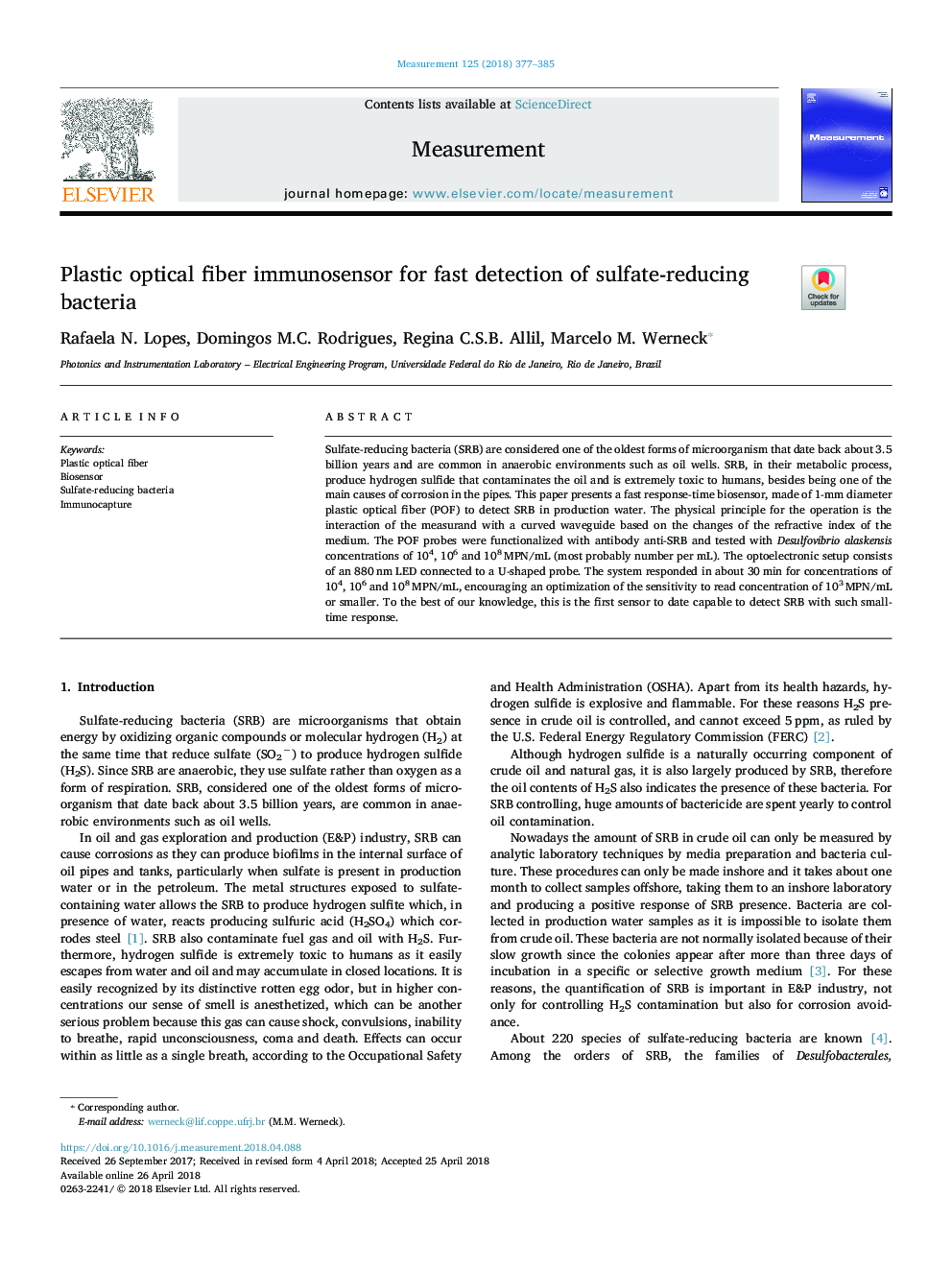| Article ID | Journal | Published Year | Pages | File Type |
|---|---|---|---|---|
| 7120909 | Measurement | 2018 | 9 Pages |
Abstract
Sulfate-reducing bacteria (SRB) are considered one of the oldest forms of microorganism that date back about 3.5 billion years and are common in anaerobic environments such as oil wells. SRB, in their metabolic process, produce hydrogen sulfide that contaminates the oil and is extremely toxic to humans, besides being one of the main causes of corrosion in the pipes. This paper presents a fast response-time biosensor, made of 1-mm diameter plastic optical fiber (POF) to detect SRB in production water. The physical principle for the operation is the interaction of the measurand with a curved waveguide based on the changes of the refractive index of the medium. The POF probes were functionalized with antibody anti-SRB and tested with Desulfovibrio alaskensis concentrations of 104, 106 and 108â¯MPN/mL (most probably number per mL). The optoelectronic setup consists of an 880â¯nm LED connected to a U-shaped probe. The system responded in about 30â¯min for concentrations of 104, 106 and 108â¯MPN/mL, encouraging an optimization of the sensitivity to read concentration of 103â¯MPN/mL or smaller. To the best of our knowledge, this is the first sensor to date capable to detect SRB with such small-time response.
Related Topics
Physical Sciences and Engineering
Engineering
Control and Systems Engineering
Authors
Rafaela N. Lopes, Domingos M.C. Rodrigues, Regina C.S.B. Allil, Marcelo M. Werneck,
